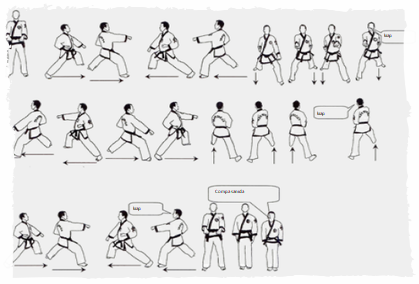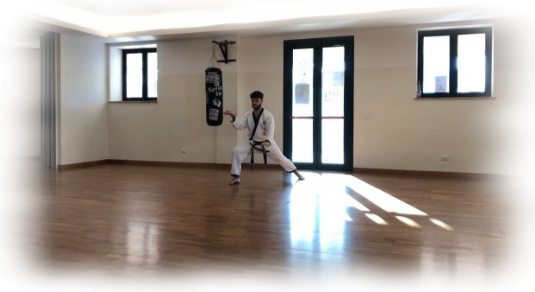Hyong (Kata)
The term Kata (Japanese 型 or 形, which can be translated as form, model, example) refers to a series of codified movements in martial arts that represent various combat techniques in order to highlight their fundamental principles and optimal execution opportunities (space, time, and speed). The term is equivalent to Taolu in Chinese martial arts.
These forms are the result of centuries of study and codification by great masters. The primary purpose of a Kata is to pass on the extensive knowledge acquired to students, as all the techniques of the martial art being practiced can be found within the various Katas. Although the main purpose of a Kata is educational, its spiritual aspect should not be underestimated. According to this perspective, the practitioner experiences the Kata by resonating with the deepest parts of their body, exercising strong control over their breathing, and seeking maximum effectiveness in the techniques, harmonizing everything into something that goes beyond a mere pattern.
Kata practice is not limited to martial disciplines but extends to any art form with the goal of Dō (道, the "way"). Examples include Shodō (the way of calligraphy), Ikebana (flower arranging), historically Kado (flower composition), and Chado (the way of tea). In all these disciplines, the aim is to merge the physical and mental components through breathing while performing a predetermined sequence of gestures to achieve a higher spiritual condition.
Each Kata consists of a series of movements that constitute its evident characteristics but also includes elements that are less immediately comprehensible. The masters who created them often deliberately obscured the meaning of certain steps to prevent others from mastering them. For example, Katas were disguised as harmless dances during the period when the practice of martial arts was banned in Okinawa.
A particular type of Kata is Kata Bunkai. "Bunkai" literally means "to dismantle, to break into pieces" and refers to the application of the Kata to real situations. While Katas can be performed individually, Bunkai requires one or more partners on whom the techniques are applied.


To access the video section, click here to view the first 8 Hyong (Kata).
Subscribe to our YouTube channel to stay updated with the latest news from the Korean Karate Tang Soo Do school.
Higher-level Hyong required for attaining Dan ranks are not publicly available.
*External link to YouTube channel


